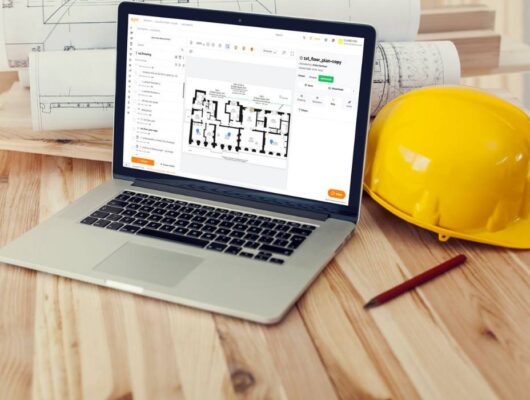Construction productivity refers to the efficiency with which resources—such as labor, materials, and equipment—are utilized to complete a construction project. Whether it’s building skyscrapers, bridges, or roads, productivity in the construction industry is a key metric that determines how effectively an organization can deliver projects within budget and on time.
Imagine a construction site as a complex puzzle, where every piece needs to fit perfectly and quickly. High productivity means achieving this fit with minimal waste and maximum efficiency. Companies that excel in productivity can deliver projects faster and more cost-effectively, boosting their profitability and reputation.
In this blog, we’ll explore how construction productivity is measured, the factors that impact it, the challenges companies face, and actionable tips to enhance productivity.
How to Measure Construction Productivity
Measuring productivity in construction requires specific metrics tailored to different resources and activities. Here are some of the most commonly used indicators:
1. Labor Productivity
Labor productivity is one of the most fundamental metrics. It is calculated by dividing the total work completed (e.g., square meters of flooring laid) by the total hours of labor. For example, if a team installs 200 square meters of flooring in 50 hours, the labor productivity is 4 square meters per hour.
2. Material Productivity
This metric measures how efficiently materials are used. It compares the actual material used to the amount allocated for the project. High material waste directly impacts project costs and productivity.
3. Capital Productivity
Capital productivity evaluates the return on investment for machinery, equipment, and technology used in a project. Companies assess whether their investments in equipment yield sufficient output to justify costs.
Each metric highlights different aspects of productivity, and the choice depends on the project’s nature and critical resources.
Factors Affecting Construction Productivity

1. Pay Structure
A well-designed pay structure is a powerful motivator. Competitive wages, coupled with bonuses or performance-based incentives, encourage workers to stay committed and productive. Conversely, inadequate pay can lead to disengagement and high turnover.
2. Workplace Wellbeing
The physical and psychological state of the workforce plays a significant role in productivity. Workers who feel safe and supported are more likely to perform well. Poor workplace conditions can lead to injuries, illnesses, and lower morale, all of which reduce productivity.
3. Lack of Tools and Technology
In today’s fast-paced construction environment, outdated tools and manual processes can significantly hinder progress. Advanced tools, such as automated machinery, Building Information Modeling (BIM), and project management software, streamline workflows and reduce errors, enabling faster and higher-quality output.
4. Workforce Diversity
Diverse teams bring varied perspectives and innovative problem-solving approaches, which are invaluable in complex projects. Inclusion fosters collaboration, higher job satisfaction, and increased productivity.
Key Issues Impacting Construction Productivity
Despite the potential for high productivity, many construction companies face significant challenges. Here are some critical issues:
1. Lack of Digital Tool Adoption
The construction industry has been slow to embrace digital transformation. Manual processes, such as paper-based plans and schedules, are prone to errors and inefficiencies. Without tools like real-time project tracking systems or digital blueprints, productivity suffers.
2. Poor Communication
Large construction projects involve multiple stakeholders, including architects, engineers, contractors, and suppliers. Poor communication among these groups leads to misunderstandings, mistakes, and rework, ultimately delaying project timelines.
3. Poor Time Management
Time is a precious resource in construction, and its mismanagement can derail even the best-laid plans. Common issues include poor scheduling, delayed material deliveries, and inefficient task delegation.
Tips to Improve Construction Productivity

To overcome these challenges, construction firms can implement strategic measures that drive efficiency and improve outcomes:
1. Adopt Digital Tools
Modern technology is a game-changer for construction productivity. Tools like Building Information Modeling (BIM), project management software, and automated scheduling systems enable teams to:
- Collaborate in real time.
- Track progress accurately.
- Quickly adapt to changes.
For instance, software solutions like EZYPRO provide comprehensive oversight, helping teams stay aligned with project goals and deadlines.
2. Enhance Time Management
Effective planning and scheduling are critical to avoiding delays. Use tools to create detailed timelines, map out each project phase, and allocate resources accordingly. Ensure materials arrive on time and that labor is optimized for seamless progress.
3. Invest in Training and Development
A well-trained workforce is a productive workforce. Regular training sessions on the latest construction techniques, tools, and safety protocols enhance both efficiency and output quality. Training also boosts employee confidence and reduces the likelihood of errors.
4. Streamline Communication
Clear and consistent communication is the backbone of any successful project. Foster collaboration through:
- Regular team meetings.
- Mobile apps for instant updates.
- Collaborative platforms for sharing plans and progress reports.
5. Conduct Regular Performance Reviews
Frequent evaluations help identify productivity bottlenecks and areas for improvement. Use feedback constructively to refine processes and keep everyone accountable for their roles.
Why Productivity Matters
Improving construction productivity benefits not only the company but also its clients. Projects are completed faster, costs are reduced, and quality remains uncompromised. High productivity also positions a company as a reliable partner, enhancing its reputation in a competitive industry.
For example, adopting digital tools and better communication practices might initially require investment, but the long-term gains in efficiency and profitability far outweigh the costs.
Conclusion
Construction productivity is more than just a metric—it’s the cornerstone of a successful project. By measuring productivity through key indicators, addressing its challenges, and adopting strategic improvements, construction firms can significantly enhance their operational efficiency and profitability.
In a world where time and resources are precious, every effort to optimize productivity counts. Whether it’s through digital transformation, better training, or smarter communication, the road to a more productive construction industry begins with proactive and informed decisions. Construction firms that embrace these changes are not only setting themselves up for success but are also building a stronger, more resilient industry for the future.








